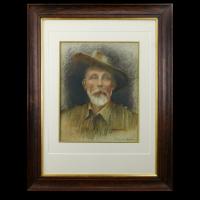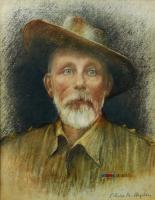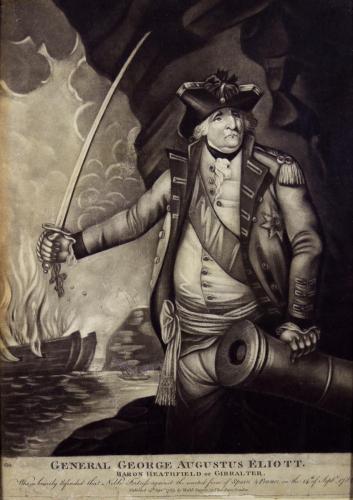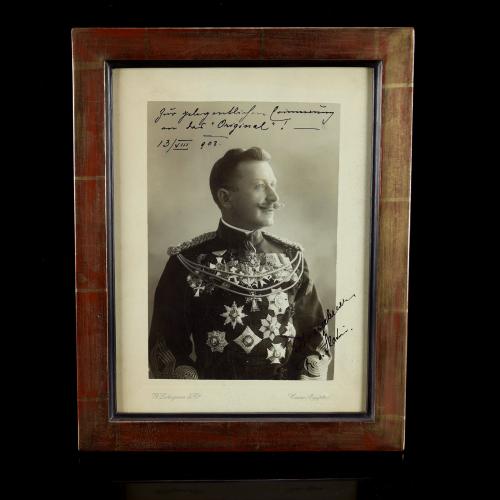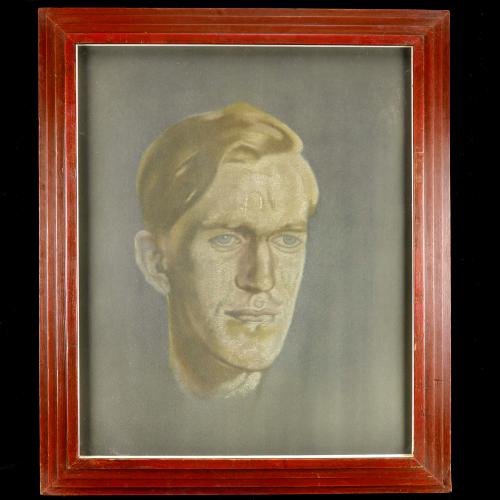
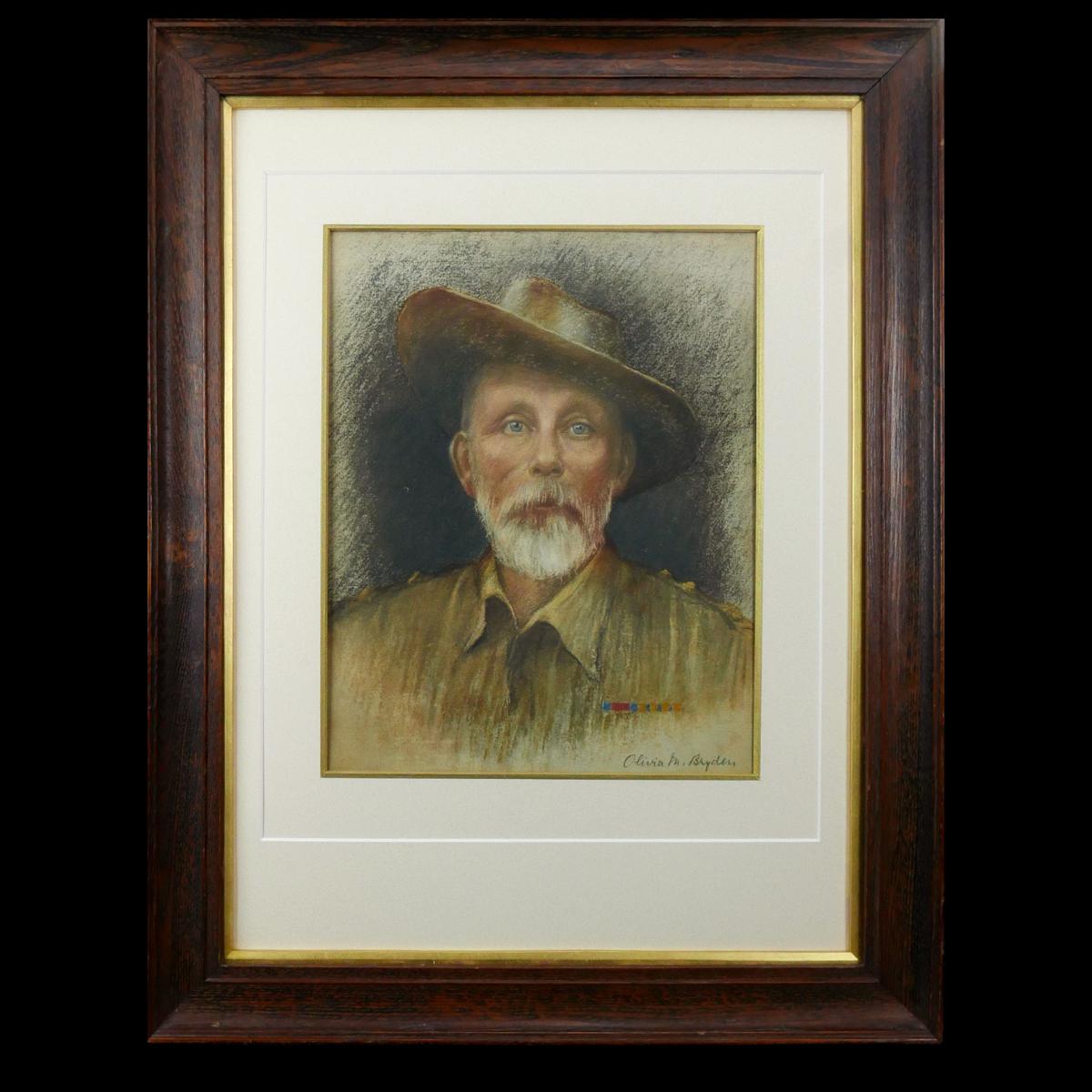
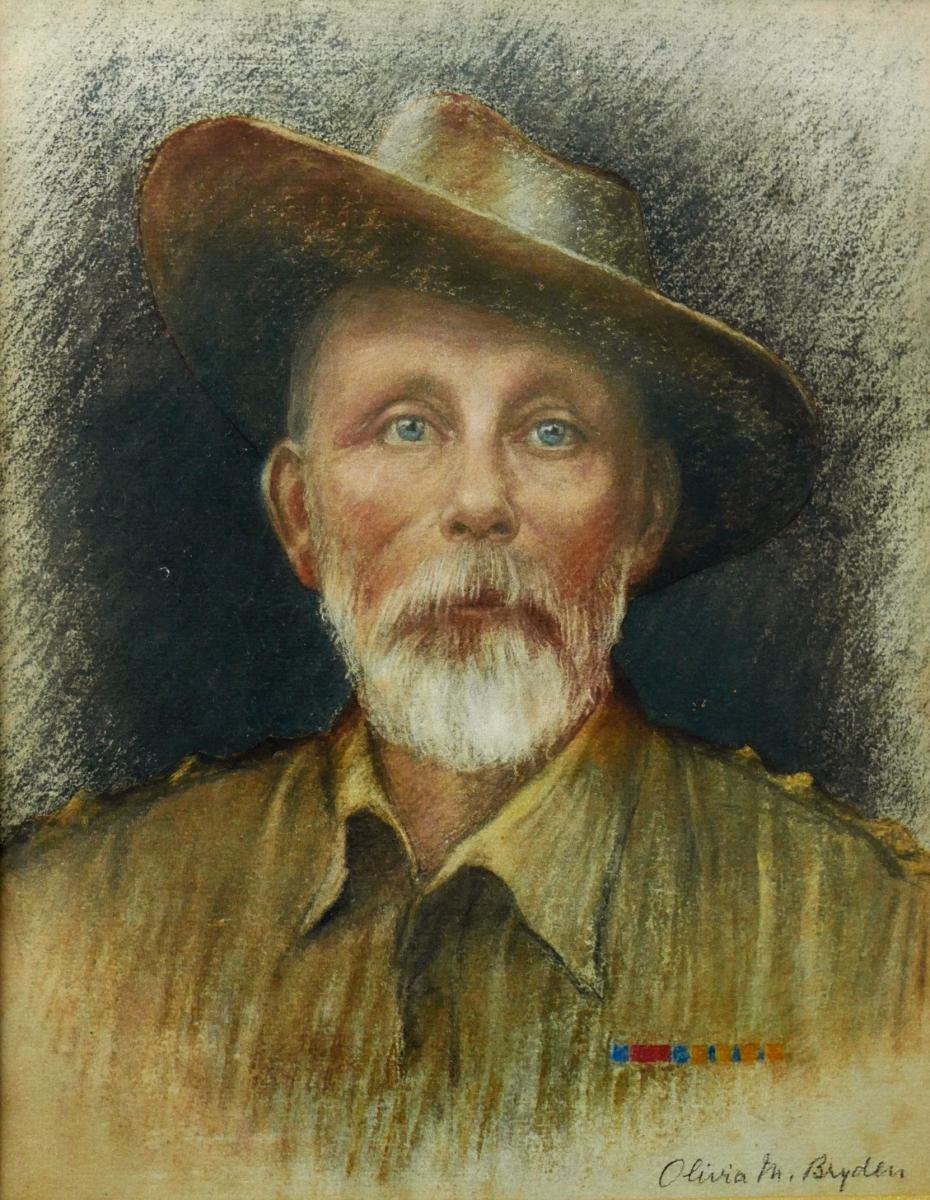
Price
£880.00This object is eligible for a Certificate of BADA Provenance
The BADA Standard
- Since 1918, BADA has been the leading association for the antiques and fine art trade
- Members are elected for their knowledge, integrity and quality of stock
- Our clients are protected by BADA’s code of conduct
- Our dealers’ membership is reviewed and renewed annually
- Bada.org is a non-profit site: clients deal directly with members and they pay no hidden fees
Print - Captain Frederick Courtenay Selous, DSO, 1920.
Overall: 62cm (24.5in) x 49cm (19.3in).
Collotype. Head and shoulders portrait after Olivia Mary Bryden’s posthumous pastel. The subject shown face on with hunting scar and wearing military dress, comprising slouch hat and bush shirt decorated with ribbon of the Distinguished Service Order. Contained in period oak glazed frame.
At the time of Selous’s death there was a considerable demand for reproductions and copies of the Bryden pastel. In response, Olivia Bryden commissioned one hundred collotypes from Emery Walker, and she also produced a number of pastel copies, at £1.1s a piece, for admirers such as Lord Rothschild, Major Sir Rhys Williams DSO, Rider Haggard and the Earl of Crewe. The prime version of this portrait of Frederick Courteney Selous by Olivia Mary Bryden is in the collection of the Royal Geographical Society, London.
Frederick Courteney Selous (1851-1917), the greatest of great white hunters, is said to be the inspiration behind Rider Haggard’s fictional hero, Alan Quatermain. Educated at Rugby School, Selous arrived in Africa aged 19 and travelled north from the Cape up the old hunters’ road to Matabeleland. There he visited Lobengula and was given leave to hunt anywhere in the king’s territory. In two decades, he travelled extensively in Zimbabwe and further afield into Zambia and Tanzania. Tanzania’s Selous Game Reserve, of some 50 thousand square kilometres and a World Heritage site since 1982, remains a monument to his travels. In the same region survive a handful of Selous’ descendants of mixed race. Cecil Rhodes hired Selous to guide his land-grabbing Pioneer Column into Central Africa in 1890. Selous participated in the Matabele Wars of 1893 and 1896 before returning to England. He married a clergyman’s daughter and settled at Essexvale, outside Bulawayo. In 1909 he accompanied former U.S. president Theodore Roosevelt in an African safari from British East Africa north to the Congo and into Egypt.

London’s Natural History Museum acknowledges more than five thousand donations from Selous in a dedicated collection. The taxidermists Rowland Ward credited him with having shot more record-sized elephant, rhino and other African animals than any other hunter. Two European rifle manufacturers named special guns after him. In 1893, the Royal Geographical Society awarded him their Founder’s medal for twenty years of exploration and surveys in ‘South Africa’. At the outbreak of the First World War, Selous, aged 64 was commissioned in the 25th (Frontiersmen) Service Battalion, Royal Fusiliers. The battalion deployed to East Africa and with orders to halt any German advance into British territory. He was awarded the D.S.O. for exemplary service. Early in January 1917, while viewing enemy movement through his binoculars, he was fatally shot in the head by German sniper.
The BADA Standard
- Since 1918, BADA has been the leading association for the antiques and fine art trade
- Members are elected for their knowledge, integrity and quality of stock
- Our clients are protected by BADA’s code of conduct
- Our dealers’ membership is reviewed and renewed annually
- Bada.org is a non-profit site: clients deal directly with members and they pay no hidden fees


